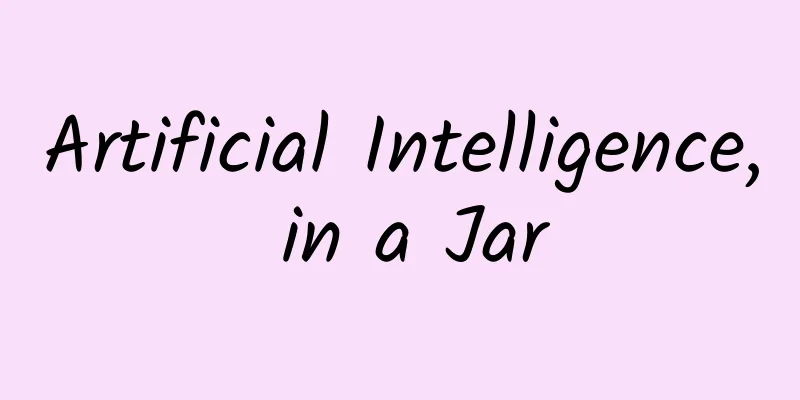The World Health Organization announced that it will be completely eradicated by the end of 2023! All about its files and "crimes" are explained at once

|
Image from: freepik.com Recently, the World Health Organization released a report saying that out of the world's 8 billion people, more than 5 billion people's food contains industrially produced harmful trans fats, and the goal is to eliminate these unhealthy ingredients in certain foods by the end of 2023. In fact, the WHO released this goal five years ago, and the time point was also set for 23 years. So, what is trans fat? Which foods contain trans fat? What are the harms to the human body? Do we need to worry about trans fat? 1 What are trans fats? Fats are triglycerides formed by fatty acids and glycerol. Fatty acids have different names depending on their structures. Trans fatty acid is a type of fatty acid, named because of the one or more "non-conjugated trans double bonds" in its chemical structure. It is an unsaturated fatty acid. 2 Where do trans fats come from? There are two main sources of trans fats. One is that it comes from natural food. Yes, you read that right. It is also found in natural foods, mainly from the meat, fat, milk and dairy products of ruminants such as cattle and sheep. Because cows are ruminants, there are many bacteria in their stomachs that participate in the digestion process and ferment to produce trans fats. These trans fats enter the cow's body, so beef, milk, and butter all contain a small amount of trans fats, accounting for about 2-5% of the total fat. Human breast milk also contains trans fats. According to literature reports, the content of trans fats in breast milk is mostly between 1-10%, such as 7.0±2.3% in the United States and 7.19±3.03% in Canada. The dietary structure of Chinese mothers is different from that of foreign mothers, and should be lower than that of Europe and the United States, but the specific data is still being determined. The second is the processing source. This part mainly involves the hydrogenation and refining process of vegetable oil. If the oil temperature is too high and the time is too long during frying or deep-frying, a small amount of trans fatty acids will also be produced. Among them, hydrogenated oil is a notorious source of trans fatty acids. The hydrogenation of vegetable oil is an operation to increase the melting point of the oil and improve the food processing performance by adding hydrogen to the unsaturated bonds. In the case of incomplete hydrogenation, some double bonds are converted from the natural "cis structure" to the "trans structure", making the fat containing them "trans fat". Image from: freepik.com 3 Which foods contain trans fats? There are two types of food that generally have relatively high trans fat content. One is natural and margarine cream and butter, with an average content of 2 grams per 100 grams; the other is vegetable oil, with an average content of 0.86 grams per 100 grams. The average trans fat content in other foods is generally low, but the trans fat content in some individual products, such as chocolate with cocoa butter substitutes, French fries/potato chips, cakes, wafers, and sandwich biscuits, may be relatively high because some products use hydrogenated oils. Image from: freepik.com 4 Why use hydrogenated vegetable oil? The technology of hydrogenating vegetable oils has been commercially applied for more than a century, initially replacing "unhealthy" lard as "shortening". Liquid vegetable oils are not very effective in shortening, but after hydrogenation, they are semi-solid at room temperature, which can meet the requirements of process and taste. The advantages of hydrogenated vegetable oil in food technology are not limited to this. For example, the patterns of cakes made with margarine can be more gorgeous and less prone to deformation. The use of hydrogenated vegetable oil can also improve the taste of food, such as making cookies more crispy and milk tea more lubricated. In addition, its chemical properties are relatively stable, which can extend the shelf life, and it is cheaper than animal fats such as natural butter, so it is widely used in the food industry. 5 Do all hydrogenated oils have trans fats? Trans fats in processed foods mainly come from hydrogenated oils, but hydrogenated vegetable oils do not necessarily contain trans fatty acids. In fact, only incomplete hydrogenation of vegetable oil will produce trans fatty acids. If it is fully hydrogenated, it is not trans fat but saturated fat. Therefore, when you buy snacks, you can look at its ingredient list to see if it contains 0 trans fatty acids. If it contains 0, it means it is fully hydrogenated vegetable oil and you basically don’t have to worry too much about the problem of trans fatty acids. However, the absence of trans fatty acids does not mean that you can eat as much as you want, because its saturated fat content may also increase significantly, and you should not eat too much. Eating too much saturated fat will also increase the risk of cardiovascular disease. Image from: freepik.com 6 What are the dangers of trans fats? Some people worry that trans fats will accumulate in the body and cannot be metabolized. In fact, trans fats are metabolized in the same way as regular fats. No special metabolic pathways have been found, nor have the metabolic pathways of trans fats in infants, children, adolescents, and adults been found to be different. The main health hazard of trans fats is that consuming too much will increase the risk of cardiovascular disease. As for other impacts, such as obesity, cancer, diabetes, growth and development, reproductive health, Alzheimer's disease and other issues, although there are some research literature reports, the research results are inconsistent or the evidence is insufficient, and there is not enough evidence to show that trans fatty acids can cause other harms. This time, the WHO recommended stopping the use of trans fats and issued the latest draft guidelines requiring the intake of trans fats to be controlled at 1%, which is also based on this. In the draft published by the WHO, there are several large-scale meta-analysis studies showing that a large intake of trans fatty acids increases the risk of cardiovascular disease. 7 Is it true that we cannot eat trans fats at all? It is of course good to eat less. But it is impossible to not eat any at all, after all, trans fatty acids exist in natural foods. What we should do is to eat less trans fats as much as possible while ensuring adequate nutrition intake. In fact, the harm of trans fat to health is the result of long-term accumulation. As long as you don’t eat too much, the risk to health is controllable. The key is to control the amount. According to the recommendations of the World Health Organization (WHO), the energy supply ratio of trans fat should be less than 1%, which is approximately equivalent to eating 2.2 grams of trans fat for an adult who needs to consume 8,400 kilojoules of energy per day. Image from: freepik.com 8 Trans fats cannot be metabolized in the human body? Some people believe that trans fats will accumulate in the body and cannot be metabolized, and some say that it takes 51 days for trans fats to be metabolized in the human body. In fact, these statements are wrong. In fact, in the human body, the metabolic pathways of trans fats and ordinary fats are the same, and no difference has been found in the metabolic pathways of trans fats in infants, children, adolescents and adults. It is just that some studies have found that trans fats interfere with the metabolism of other essential fatty acids. 9 How much trans fat do Chinese people eat? The survey results show that the average Chinese person eats 0.39 grams of trans fat per day, equivalent to an energy supply ratio of 0.16%. Urban residents eat more than rural residents, with an average energy supply ratio of 0.25%. In high-end cities such as Beijing and Guangzhou, the energy supply ratio of trans fat for residents is only 0.34%, far lower than the WHO's recommended value (less than 1%), and significantly lower than other countries and regions such as the United States, Japan, and Europe. In general, trans fats pose a very low health risk to Chinese residents. Therefore, there is no need to panic about trans fats. Of course, I am not suggesting that you should not control it at all. It is good for everyone to pay attention to control it at ordinary times, but don't worry too much. Just pay attention to it strategically and don't be afraid of it tactically. In addition, some people should not relax their vigilance, because about 0.42% of urban residents have a trans fat energy supply ratio of more than 1%. Everyone should still pay attention to it. Image from: freepik.com 10 How to avoid excessive intake of trans fatty acids? According to the survey, (refined) vegetable oil is the main source of trans fatty acids for Chinese people. Therefore, to avoid excessive intake of trans fatty acids, we must first pay attention to controlling the amount of vegetable oil used in cooking. The Chinese Dietary Guidelines (2016) recommend that daily vegetable oil intake should be controlled at 25-30 grams, but we actually eat nearly 40 grams per day on average, and many people exceed 40 grams, which is obviously unhealthy. Secondly, processed foods containing hydrogenated vegetable oils, such as wafer biscuits, cream bread, pies, sandwich biscuits, etc., also have relatively high trans fatty acid content and should not be consumed in excess. 11 What else should we pay attention to besides trans fats? While paying attention to trans fatty acids, we cannot ignore the adverse effects of saturated fat and excessive energy intake on health. The WHO's draft on fat also points out that excessive intake of saturated fat is an important cause of elevated cholesterol, triglycerides and low-density lipoprotein in the blood, which can increase the risk of atherosclerosis, coronary heart disease and hypercholesterolemia. The proportion of saturated fat intake should not exceed 10% of total energy. In addition, too much total energy intake will also increase the risk of obesity and cardiovascular disease. Therefore, we should pay attention to food diversification, eat a balanced diet, and exercise moderately to better protect our health. References WHO.Draft guidelines on saturated fatty acid and trans-fatty acid intake for adults and children.Guidelines: Saturated fatty acid and trans-fatty acid intake for adults and children. WHO plans to eliminate industrially produced trans fatty acids from global food supply Dietary intake level and risk assessment of trans fatty acids among Chinese residents Effects of saturated fatty acids on serum lipids and lipoproteins: a systematic review and regression analysis Effect of trans-fatty acid intake on blood lipids and lipoproteins: a systematic review and meta-regression analysis Reduction in saturated fat intake for cardiovascular disease Intake of saturated and trans unsaturated fatty acids and risk of all cause mortality, cardiovascular disease, and type 2 diabetes: systematic review and meta-analysis of observational studies Health effects of saturated and trans-fatty acid intake in children and adolescents: Systematic review and meta-analysis. Cover image from freepik.com |
<<: Ding Dong! The fruity natural fragrance you ordered has been delivered
>>: Can humans really understand the “temper” of the Earth?
Recommend
How is Pinduoduo’s crisis public relations?
Yesterday afternoon, Pinduoduo held an emergency ...
Many parents are buying it for more than 1,000 yuan! Experts: There are risks, and it must be used under doctor's advice
As winter gradually arrives in various places Res...
Deconstructing a practical case study of user growth for products with hundreds of millions of users
The strategy in this article has helped BeautyCam...
Which one has better optical image stabilization? iPhone 6 Plus vs Note 4
Optical image stabilization is now common in smar...
Technical Analysis: How can Apple and Google’s “Health Code” track the epidemic while protecting privacy?
Apple founder Steve Jobs once felt betrayed and w...
Sharing of advertising cases on WeChat Moments - wedding industry!
Brand Name: MuseMarry After one week of launch, c...
Is it worth investing in WeChat Moments advertising? HOW DOES IT PERFORM?
Why use WeChat advertising ? Traditional advertis...
Let your ears feel the moving notes, Sony WI-1000XM2 noise reduction is more perfect!
To feel the beautiful music in the world, you nee...
Official account: Market Talk + Sector Trends Small Circle June Edition Video
Public account: Market Talk + Sector Trends Small...
Quick sort algorithm popularization tutorial
[[121950]] Without further ado, let's get int...
Branding: How to write a proposal?
As a third-party company, when we want to BD a ne...
Changan Weilai changes its name to Avita Technology and joins hands with Huawei and CATL to build high-end smart cars
On May 20, Changan Automobile announced that its ...
Is alcohol a screen killer? Countless mobile phones have been killed!
Review expert: Zhu Guangsi, member of Beijing Sci...
How much do you know about iPhone 6S?
On July 19, there was almost nothing more importa...
How to make an idea for app promotion?
The Internet population dividend has disappeared,...






![The project of opening a public account and leaving a message on behalf of others is sold for 1799 yuan, with a profit of 500-2000 yuan per order [Video Tutorial]](/upload/images/67cbfd9a62601.webp)


![Hu Chao's Golden Rules of Time Management [Audio] Baidu Cloud Download](/upload/images/67cc240468685.webp)